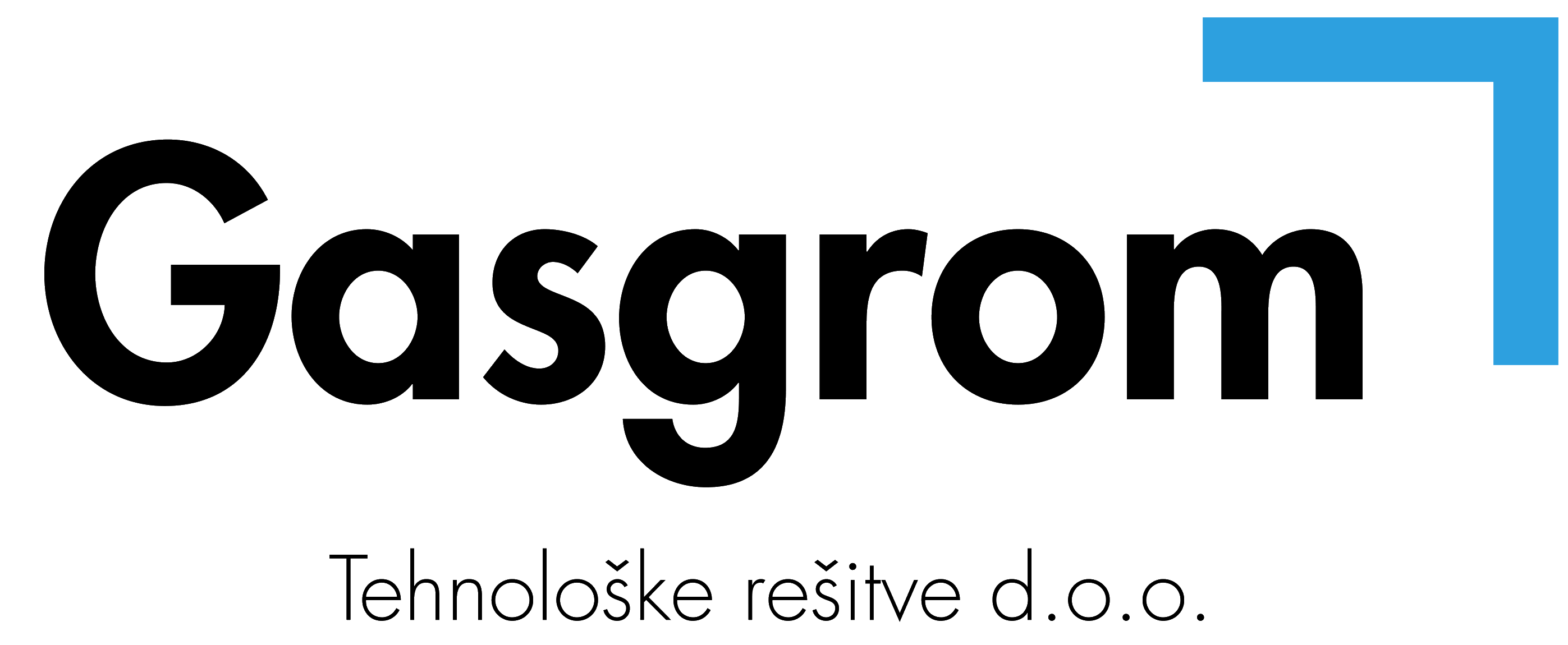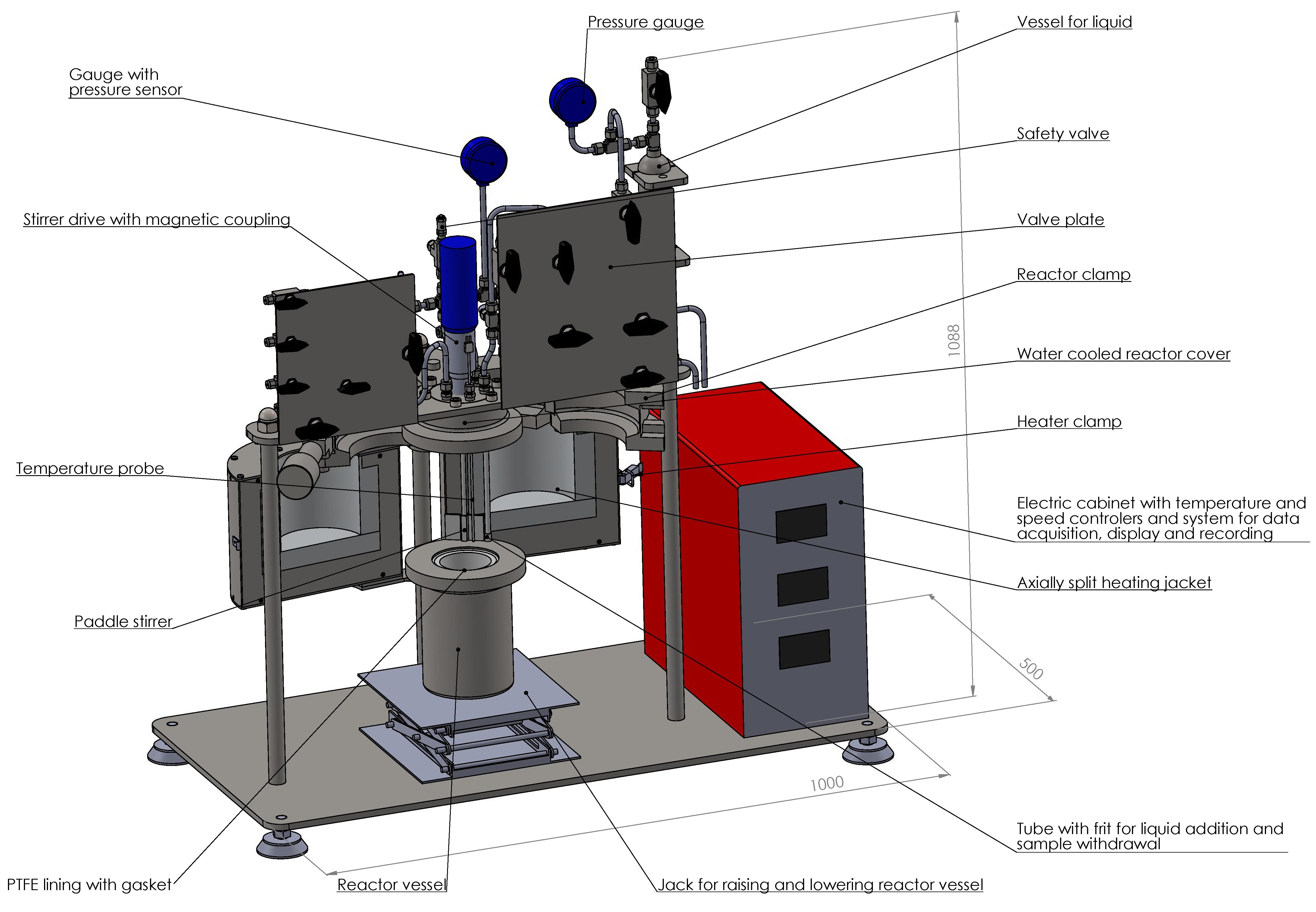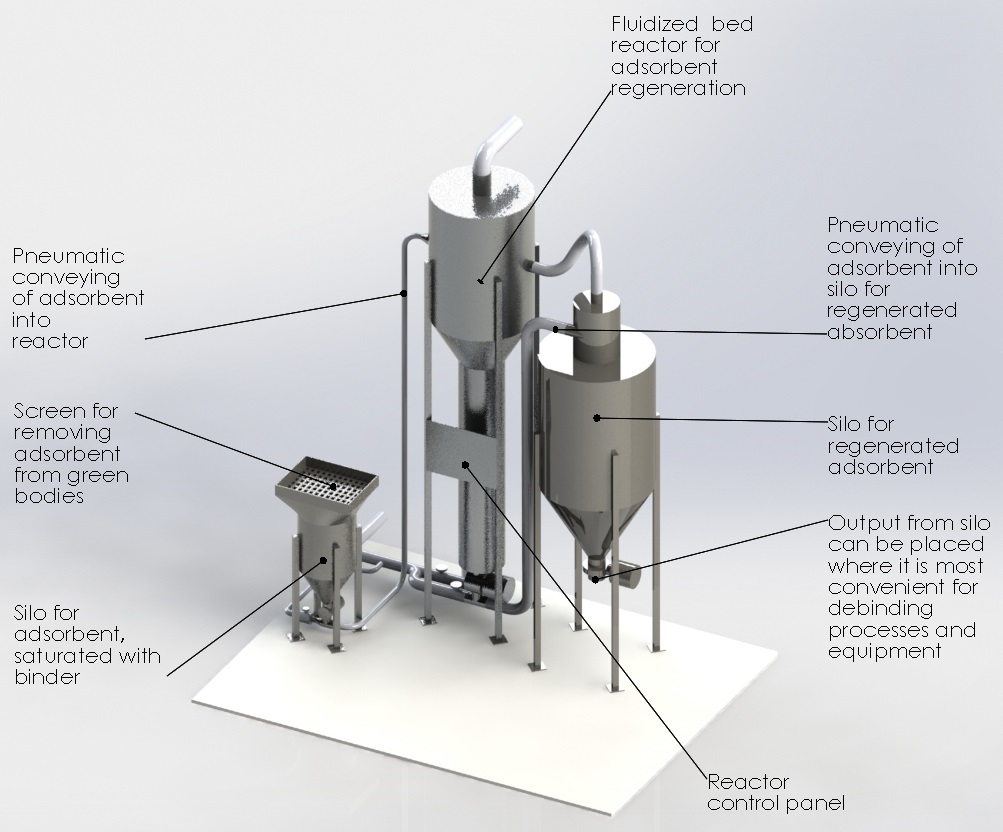



GG-R1-1000-200-300 reactor system is intended for reactions and other process operations on wide range of pressures and temperatures. PTFE lining can be inserted, improving reactor resistance to aggressive media at expense of smaller reactor volume and lower temperatures. Temperature is controlled by cartridge heaters inserted in heating jacket. Reactor enables all tree aggregate states of matter to be processed. System can be connected to different gases from which mixture can be prepared. Reactor vessel can be filled with liquid prior to assembly on reactor cover or after assembly from 150 mL vessel by aid of gravity. Piping system with valves enables sampling of gaseous and liquid phases. Liquid sampling system is designed to minimize amount of liquid sample, thus increasing number of samples that can be taken in a given time or increasing process time without prematurely running out of reaction mixture. Frit at the bottom of dip tube prevents particles entering into sample line if process includes solid particles. Fluid transfer through reactor system is controlled by valves, mounted on valve plate. This way safe access is assured for the operator. Entire system is mounted on frame with adjustable legs and is positioned in such a way that easily accessible for operation and maintenance. The biggest advantage of GG-R1-1000-200-300 compared to most commercially available reactor system is ease of assembly of reactor vessel to cover, fixed on the frame. No special tools as for example torque wrenches and no tedious process of tightening the bolts are needed. Reactor vessel is secured to cover by special so-called tri-clamp coupling. Coupling is closed by turning its handle by hand. Clamp is rotatably mounted on the frame which additionally simplifies assembly as there is no need to raise it during assembly. Lifting jack is used to raise reactor vessel to its cover. Similar to clamp, heating jacket is rotatably mounted on the frame. It is axially split. After mounting reactor on cover, jacket is closed around reactor and secured by a jacket clamp. According to customer specifications, reactor can be equipped with stirrer from wide spectrum types. Stirrer is coupled to its drive via magnetic coupling which enables hermetically sealed operation. System is equipped with temperature and pressure sensor and system for control of temperature and stirring speed. Controls system also enables data acquisition and transfer to personal computer. Reactor design is flexible and it is possible to adapt it to customer requirements amongst others in respect to volume, construction materials, additional equipment and types and sizes of process connections.

In process industry cases are found, where small amounts of combustible materials have to eliminated from much larger amount of inert solid material in order to regenerate it. Such cases are for example in ceramics industry where organic binder has to be removed from adsorbent and in chemical industry where deactivated catalyst has to be regenerated by removing coke or organic components. Despite of calorific value of materials to be removed, simple burning-off is not possible. Inert components would consume entire heat, released by combustion, before temperature where combustion takes place would even be reached. In practise additional sources of heat are used to achieve combustion and/or desorption temperatures of materials to be removed. Application of such heat sources decreases economic efficiency of regeneration process and creates either direct or indirect emissions of carbon dioxide. Physically desorbed materials can also contribute to hazardous emissions themselves. The aim of fluidized reactor development has been to built a device for regeneration of solid materials by combustion materials to be removed using their caloric value alone without additional heat. Regeneration processes would thus be more economical and environmentally friendly. Special design of reactor allows combustion temperatures to be maintained using only calorific value of materials to be removed. Reactor prototype was developed for regeneration of adsorbent in ceramics industry. Organic binder, used in low pressure moulding process, had to be removed from alumina-based adsorbent. Alumina adsorbent with only 5 wt. % of combustible organic components with total calorific value of 730 J/g was regenerated with prototype shown on Figure 1. Reactor operated with combustion zone temperature in range of 400 °C to 450 °C. Alumina adsorbent prior and after regeneration is shown on Figure 2. Existing process of alumina regeneration is operated batchwise in following steps: filling vessels with alumina and inserting them into regeneration furnace, heating furnace to regeneration temperature, maintaining furnace at regeneration temperature, cooling to room temperature, emptying furnace and vessels and distributing regenerated alumina to places of need. Because of batchwise operation no heat can be recovered, leading to even lover economics. Manipulation with adsorbent is also labour intensive. Regeneration process based on fluidized bed reactor would not only reduce energy consumption, emissions and improve environmental performance but also increase economics by simple integration of fluidized bed reactor to pneumatic conveying system for collection and distribution of adsorbent prior and after regeneration. Envisaged system is shown on Figure 3.

Sampling valve was developed for direct sampling of gas from process and transfer of samples to gas chromatograph. Compared to most sampling valves, available on the market, this sampling valve has only PTFE and Viton® parts exposed to media which enables outstanding resistance to aggressive media. Housing, constructed of well thermally conductive material enables uniform temperature to be achieved over entire valve by electric heater and prevents condensation of sample components. Valve is designed to be mounted directly to inlet of Agilent® 7980 gas chromatograph with its pneumatic actuator. Direct mounting over heated inlet additionally prevents condensation during transfer of sample from valve to the inlet by preventing exposure of sample to temperatures below dew point. According co customer requirements, valve can be tailor made for other gas chromatograms, with own pneumatic actuator and it can accommodate even more chemically resistant Kalrez® gaskets and seals.
Gasgrom, tehnološke rešitve d.o.o.
Direktor Matic Grom
Breznica 15, Breznica, 4274 Žirovnica